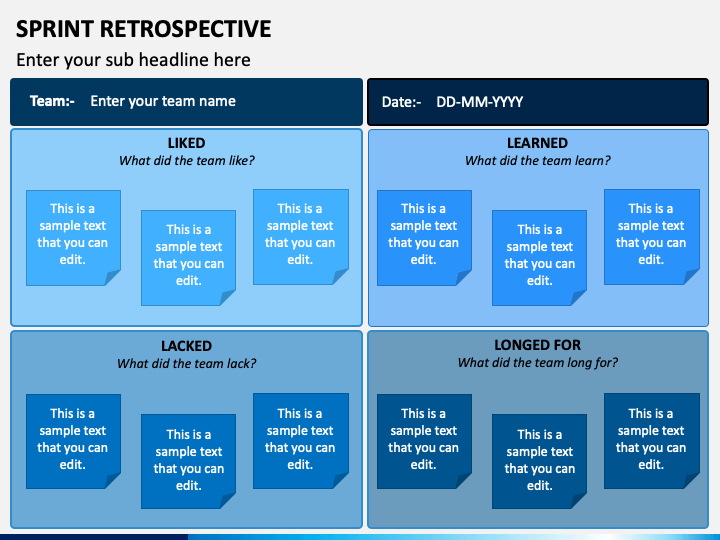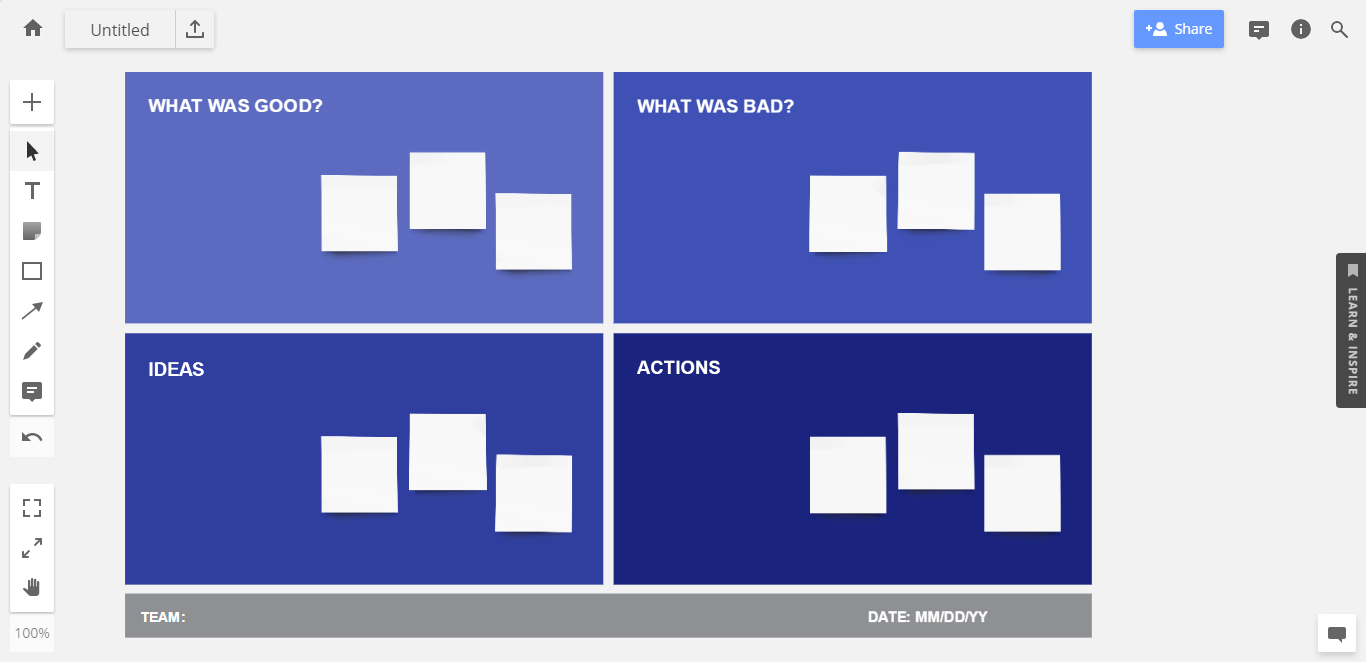
Having them too frequently can eat into valuable development hours and also cause additional friction when it comes to transitioning from one phase to the next. With that said, retrospective meetings do take up time. You can hold a retrospective with every sprint, or even during your daily standup, depending on the type of project you’re working on and its scope. This is because people tend to forget what happened in past iterations as they move on to the next stage. When Do You Hold a Retrospective Meeting?Īs a rule, the more frequently you hold retrospective meetings, the more effective they become. Your team may even derive new best practices from the positive learnings which come to light in the retrospective. This not only helps improve morale for the team, but it also provides opportunities to strengthen the parts of the process that you did find effective. Of course, retrospective meetings should also include time to praise the process. Through these insights, the team can carry out future meetings with past challenges in mind, and therefore prevent issues from repeating. A properly executed retrospective meeting will facilitate open discussion among all stakeholders and allow everyone to gain new perspectives and insights into what happened. This includes discussing conflicts that arose during the project and criticizing inefficient processes. The objective of any retrospective meeting is to provide a safe space for every stakeholder to talk about the last iteration. What is the Goal of the Retrospective Meeting? However, in Scrum, where the sprint retrospective meeting is one of the Scrum ceremonies, it might be the Scrum master who hosts retrospective meetings. Often product managers hold retrospective meetings.
Sprint retrospective meeting how to#
In particular, stakeholders will discuss both what went wrong and how to correct it for future iterations, and also what went well.

During the retrospective meeting, the whole team discusses the last cycle of work and reflects on what happened. Retrospective Meetings: Informing the FutureĪ retrospective meeting in Agile is a type of meeting that takes place at the end of a given iteration or release cycle.

Discuss concrete steps your team can take to improve


 0 kommentar(er)
0 kommentar(er)
